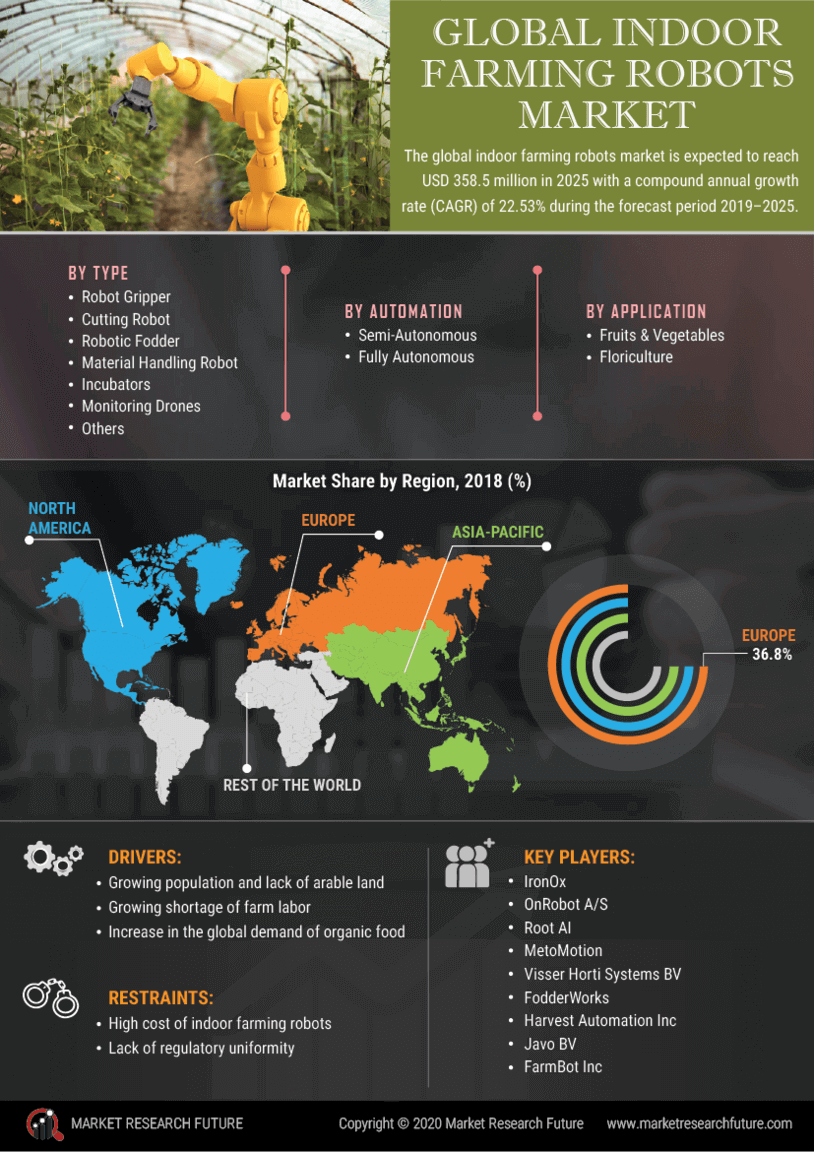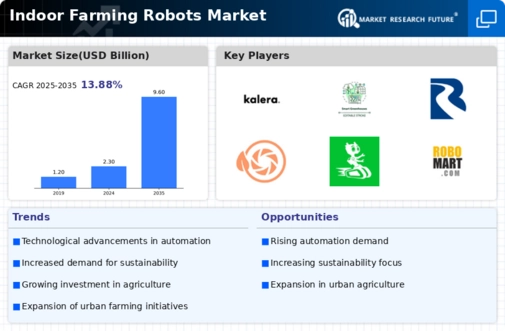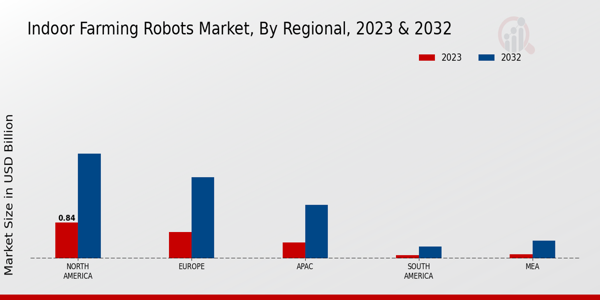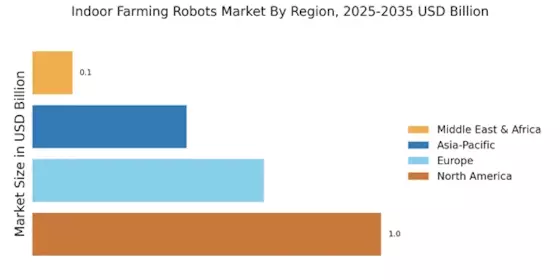Labor Shortages in Agriculture
The Indoor Farming Robots Market is significantly influenced by labor shortages in traditional agriculture. As the workforce in farming diminishes, particularly in developed regions, the reliance on automation and robotics becomes increasingly vital. Indoor farming robots can perform repetitive tasks such as planting, harvesting, and monitoring crops, thereby alleviating the pressure on human labor. The market for agricultural robots is anticipated to grow at a compound annual growth rate of 24% through 2025, reflecting the urgent need for solutions that address labor challenges. This trend underscores the potential of robotics to transform the agricultural landscape.
Rising Demand for Fresh Produce
The Indoor Farming Robots Market is driven by an increasing consumer demand for fresh, locally sourced produce. As urban populations grow, the need for sustainable food production methods becomes more pressing. Indoor farming, supported by robotic technologies, allows for year-round cultivation of fruits and vegetables, minimizing transportation costs and reducing carbon footprints. Reports suggest that the demand for fresh produce is expected to grow by 5% annually, further propelling the adoption of indoor farming solutions. This trend indicates a shift towards more sustainable agricultural practices, where robots play a crucial role in meeting consumer expectations.
Government Support and Incentives
The Indoor Farming Robots Market benefits from various government initiatives aimed at promoting sustainable agriculture. Many governments are providing financial incentives, grants, and subsidies to encourage the adoption of innovative farming technologies, including robotics. These initiatives are designed to enhance food security, reduce environmental impact, and support local economies. For example, funding programs for agricultural technology have increased by 30% in recent years, indicating a strong commitment to advancing indoor farming practices. Such support is likely to accelerate the integration of robotics in agriculture, fostering growth in the indoor farming sector.
Technological Innovations in Automation
The Indoor Farming Robots Market is experiencing a surge in technological innovations that enhance automation in agricultural practices. Advanced robotics, artificial intelligence, and machine learning are being integrated into indoor farming systems, allowing for precise monitoring and management of crops. These technologies enable farmers to optimize resource usage, reduce labor costs, and increase yield efficiency. For instance, the market for agricultural robots is projected to reach USD 20 billion by 2025, indicating a robust growth trajectory. As these innovations continue to evolve, they are likely to redefine traditional farming methods, making indoor farming more efficient and sustainable.
Environmental Sustainability Initiatives
The Indoor Farming Robots Market is increasingly aligned with global environmental sustainability initiatives. As concerns about climate change and resource depletion rise, indoor farming presents a viable solution by utilizing less water and land compared to traditional farming. Robotics in indoor farming enhances these sustainability efforts by optimizing resource management and reducing waste. The market for sustainable agricultural practices is projected to grow significantly, with indoor farming robots playing a pivotal role in this transition. This alignment with sustainability goals not only attracts investment but also encourages consumer preference for eco-friendly food production methods.


















Leave a Comment